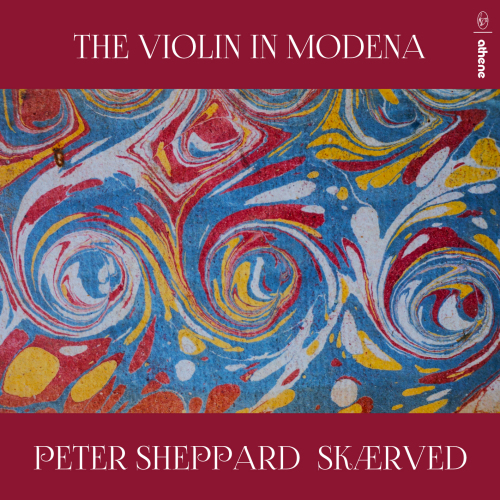Infodad
Soloist-focused CDs often have the unfortunate effect of making the performer seem more important than what is performed – especially when, as is all too often the case, the music is distinctly minor or comes across as a series of encores, showcasing a performer’s talents effectively but not providing listeners with a particularly memorable experience beyond that of hearing small stuff well-played. In some cases, though, a performer-focused release rises above the pack, even when it does contain some less-than-stellar music.
Peter Sheppard Skærved’s discs exploring the great violins of specific time periods are cases in point, partly because the focus of all of these CDs is on the instruments as well as the highly skilled player wielding them. The latest Athene CD in this series features Skærved playing a 1572 Amati violin in two extended works by Giovanni Battista Vitali (1632-1692) and Giuseppe Colombi (1635-1694), plus an anonymous instrument from Brescia, circa 1570, in four brief anonymous pieces from the 150-plus works in the 17th-century Rost Codex. From an academic/musicological perspective, the exploration here centers on the city of Modena, Italy, in the time period near the end of the 1600s, and all the music is heard here in world première recordings in solo-violin form.
Although both Vitali and Colombi worked in numerous forms, their pieces on this disc are in the dance-suite format so familiar to audiences interested in Baroque music. Vitali’s eight-movement Partite sopra diverse sonate per il violino solo contains some interesting structural elements, such as a Capriccio sopra il cinque passi followed immediately by a Capriccio di tromba. Its concluding Barabano is one of the few relatively familiar works by Vitali. Colombi’s Scordatura e Composizioni Varie has even more movements – 14 in all – including four labeled Allemanda and two sarabandes; it too ends with a Barabano, this one more extended than Vitali’s. Colombi’s Giga and Scordatura movements are particularly interesting rhythmically. As for the four anonymous works, three are labeled Allemanda a violino solo sine basso and the fourth and longest is a Sonatina a violino solo verstimbt – the last word being essentially the German equivalent of scordatura. Every piece on the disc is well-crafted and designed to showcase the skill of the performer, and Skærved certainly has skill to spare in this repertoire. The disc is admittedly for a somewhat limited audience, the composers not being especially well-known, the pieces not especially well-differentiated from others of the time, and audience interest in hearing specific instruments not being particularly widespread. Nevertheless, the combination of Skærved’s performance excellence with the very high quality of the violins he uses here and the well-composed if not especially distinctive music make this disc a pleasure to hear.
@divineartrecordingsgroup
A First Inversion Company
Registered Office:
176-178 Pontefract Road, Cudworth, Barnsley S72 8BE
+44 1226 596703
Fort Worth, TX 76110
+1.682.233.4978












